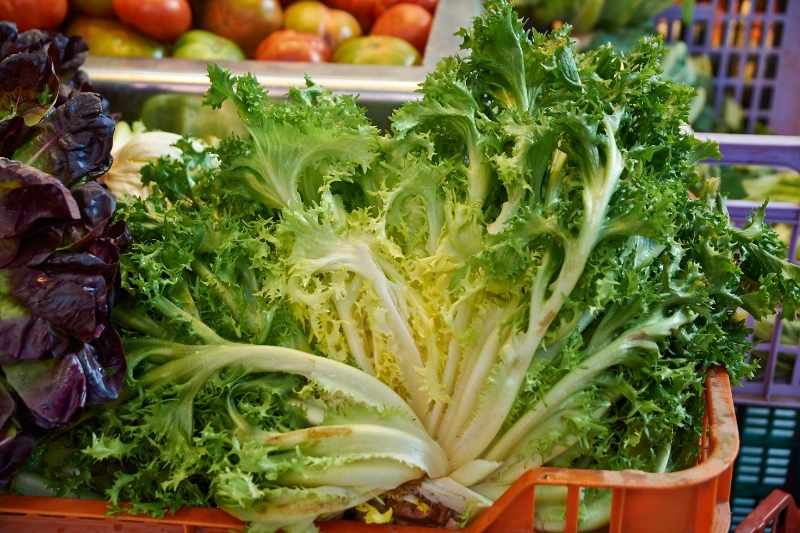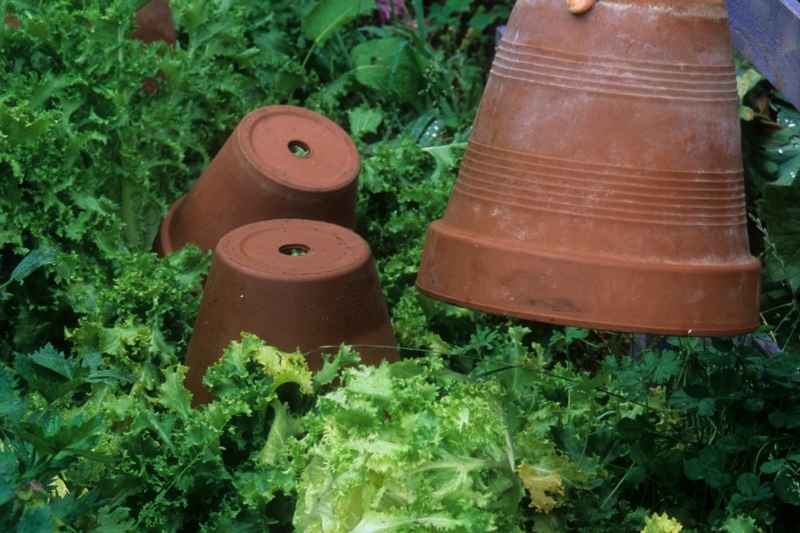The practice of blanching leaf vegetables or "winter salad leaves" is only advisable for certain chicories, frisée and escarole types, and for cultivated dandelions. Blanching before harvest in vegetable patch produces tender leaves with attenuated bitterness. Blanching is however not obligatory and there are several methods to achieve it. Note that some varieties of chicory blanch in their heart without intervention or are naturally mild. This is particularly the case for Frisée chicory 'Grosse Pancalière', summer yellow-heart chicory or blond escarole chicory with full heart.

Some winter salad leaves benefit from blanching to reduce their bitterness
Why blanch certain "salads"?
Blanching salad leaves involves preventing photosynthesis of the plant by occlusion. The blanched parts of chicories become a little more tender, but above all less bitter.
When to proceed?
Blanching salad leaves is done when they are ready to be harvested. The operation lasts about 7 to 10 days.
Important! Always blanch when weather is dry and outside frost periods. Otherwise, you risk causing your chicories to rot.
Also, do not blanch all your plants at once; work on a few at a time. Blanched salad leaves cannot be stored and if you leave them in soil without protection, they will turn green again (and bitter!).
How to blanch winter salad leaves?
→ Several techniques are possible :
Cover the salad leaves
This is the simplest method. Simply cover the vegetable with a cloche designed for this purpose, or even a flowerpot (in that case block the drainage holes) or a bucket. An opaque cloche provides perfect occlusion as well as protection against moisture. They are often fitted with a vent to open once a day or come with spikes allowing elevation and thus air circulation underneath.
If using a cloche or a pot without ventilation, raise it slightly above soil using a piece of wood, a small stone...
Do not forget to secure cloches firmly to soil: with mini pegs or by weighing them down with weights (large stones).
An old method was to cover chicory or dandelion with straw or dead leaves. Unfortunately, this technique attracts voles and slugs and sometimes causes the salad to rot.

Large terracotta pots are a practical way to blanch salad leaves effectively in the vegetable patch
Install a tunnel
This method is reserved for market gardeners or gardeners with a very large vegetable patch. You can grow chicories under a long opaque plastic tunnel.
If you grow chicories under a cold frame, simply place plastic, cardboard or mats on top of it.
Tie the leaves
This method is more often used for other types of vegetables, such as blanching cardoon stems, for example. But it can be considered for salads. Simply tie the head with a string so that the heart of the chicory is covered by the surrounding leaves.
Note: if you plant chicories very close together, they will "push each other" so that the outer leaves rise, creating protection for the heart. This allows blanching chicories without any intervention.































![[plant id="1234" name="Winter Lettuce" type="vegetable"]
To blanch a winter lettuce [plant id="salade" care="winter"]](https://en.promessedefleurs.eu/blogwp/wp-content/uploads/2022/09/blanchir-une-salade-dhiver.jpg)
Comments